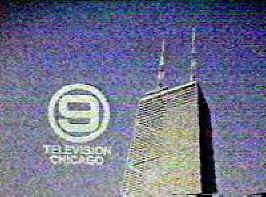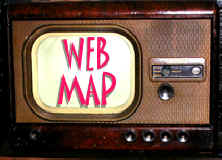
CHICAGO TELEVISION GALLERY
Chicago's oldest call letters WBKB (Zenith's WTZR, although older do not count as the calls were never used) had been first used in 1943. Launched in 1940 as experimental W9XBK by John Balaban and Capt. Bill Eddy of Paramount's Balaban & Katz Theaters movie house chain, the station found itself a unwitting participant in a anti-trust legal struggle between Paramount and the U.S. Government regarding the movie giant's involvement in film production, movie house chains and local television station ownership. The end result being United Paramount Theaters, a separate company, which would merge with the financially strapped ABC-TV network in 1953. Only allowed one station per market (the merger gave ABC two- WENR-TV on channel 7 and Paramount's WBKB on channel 4), ABC sold the channel 4 license to CBS and moved the WBKB call letters to channel 7 replacing the original WENR-TV. In 1968, the station became WLS-TV. The circle 7 logo is one of the most familiar and enduring American television station logos. It is used on all the channel 7 owned and operated ABC stations.








